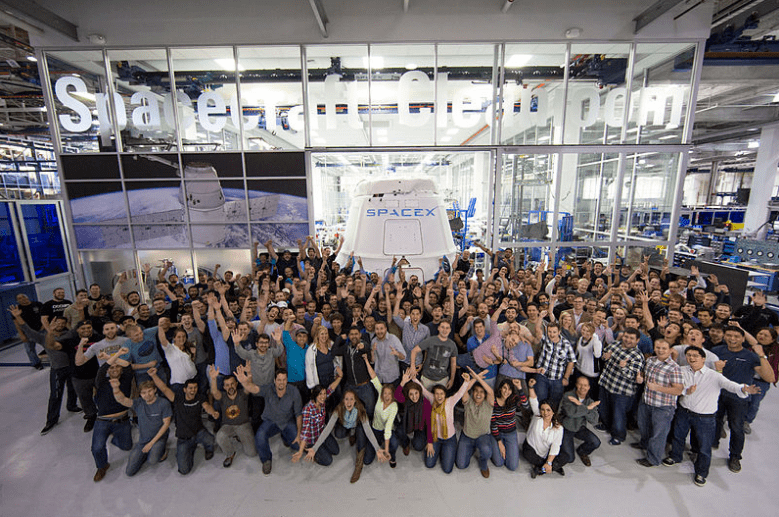Exploring the Deep Space Network and Its Role in Space Exploration: Connecting the Cosmos
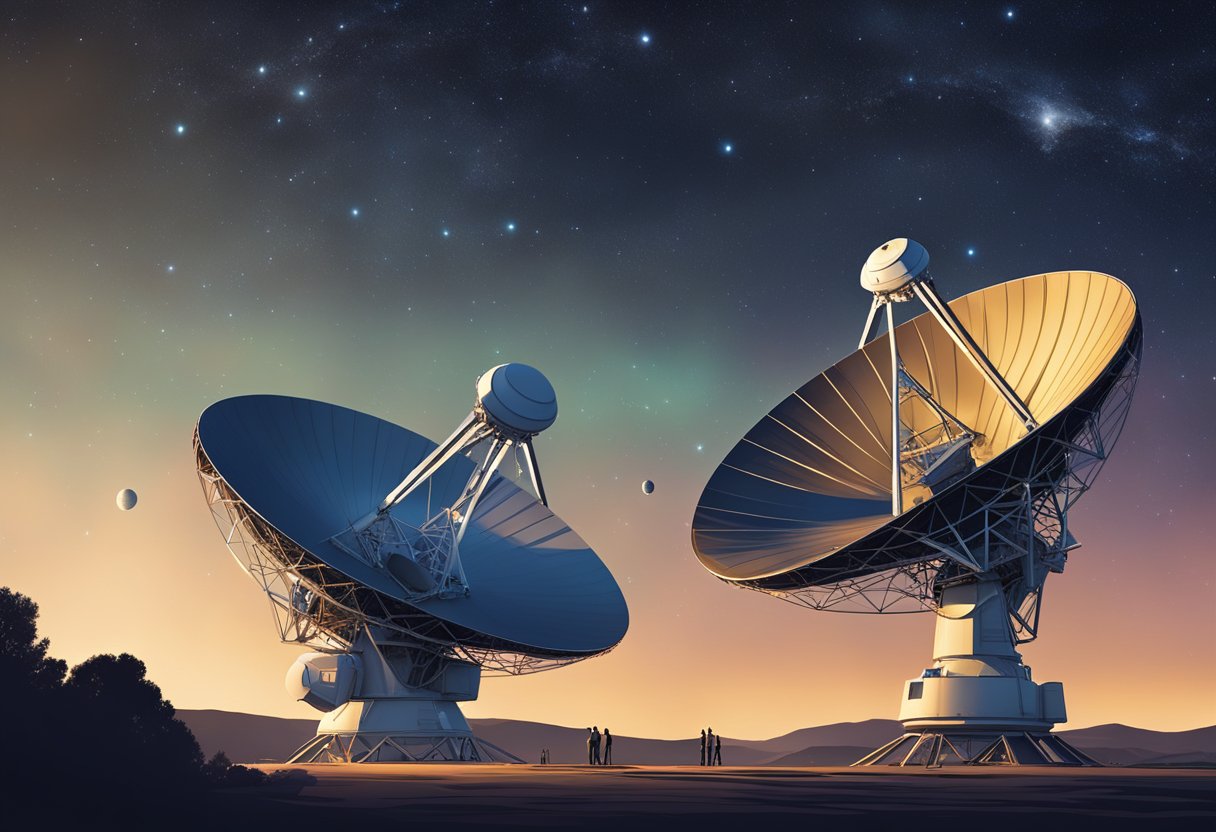
The Deep Space Network (DSN) is a critical part of NASA's space exploration efforts. This network of giant radio antennas allows NASA to communicate with interplanetary spacecraft. The DSN not only supports missions within our solar system but also provides crucial data from those exploring beyond. It enables mission control to send commands and receive invaluable scientific data from distant spacecraft.
Managed by NASA's Jet Propulsion Laboratory (JPL), the DSN is the largest and most sensitive scientific telecommunications system globally. With facilities spread around the world, the DSN ensures constant communication with spacecraft, regardless of Earth's rotation. This setup is vital for navigation, enabling spacecraft to journey through space accurately and effectively.
The continuous upgrades and future development plans for the DSN highlight its importance in advancing space exploration. As NASA prepares for ambitious missions, including the return to the Moon and future trips to Mars, the DSN's ability to handle increasing demands and support complex missions will be pivotal. It not only supports current missions but also lays the groundwork for humanity's future in deep space.
History and Development of the Deep Space Network
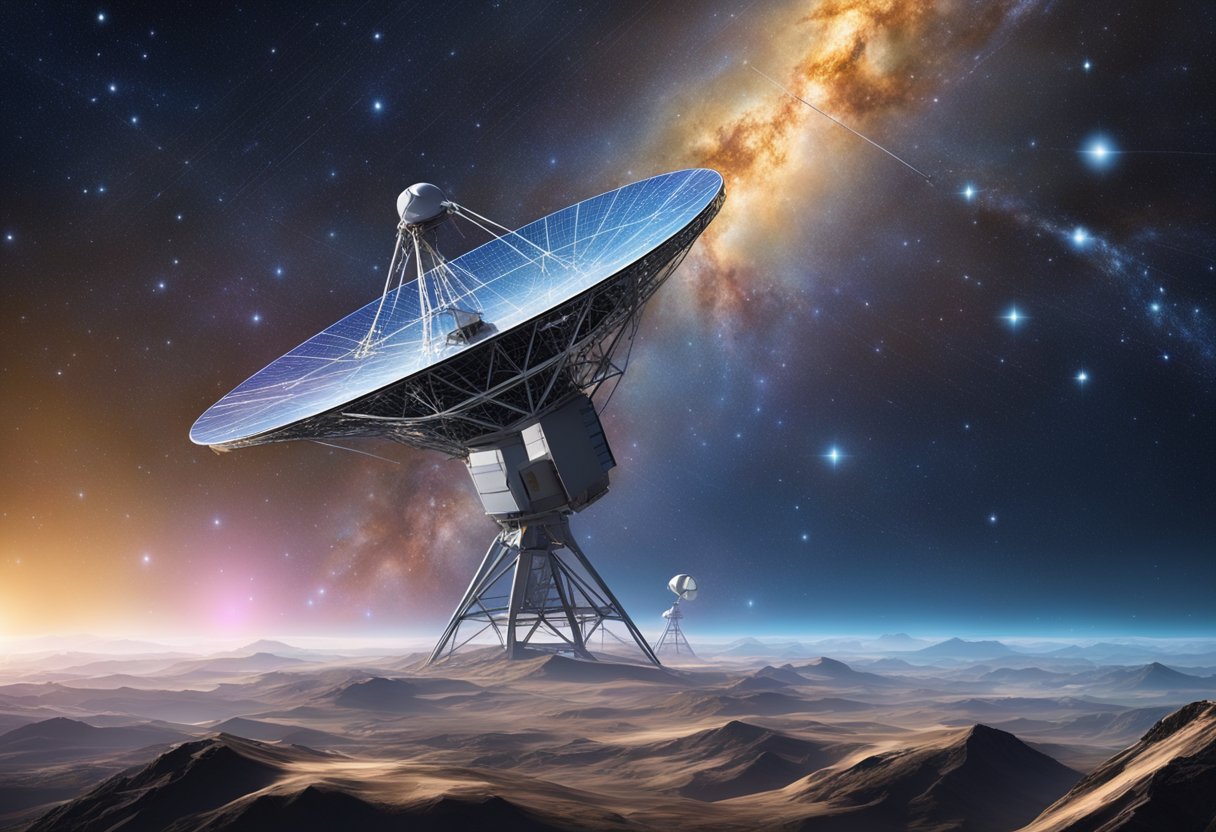
The Deep Space Network (DSN) has been crucial for NASA's space missions, providing communication links and supporting scientific discoveries. This section explores the founding of the DSN and its major milestones and evolution over the years.
Founding of the DSN
The roots of the DSN can be traced back to January 1958. Initially, portable radio tracking stations were set up by the Jet Propulsion Laboratory (JPL) for the Army. These stations were placed in Nigeria, Singapore, and California to track the first successful U.S. satellite, Explorer 1.
By October 1958, NASA was officially established, and JPL transitioned from the U.S. Army to NASA. The need for a reliable communication network for space exploration led to the formal creation of the DSN. It became the primary means for communicating with interplanetary missions.
Major Milestones and Evolution
The DSN began operations in 1964, supporting a variety of missions. Significant milestones include the first close-up images of Mars from Mariner 4 in 1965. The DSN continued to evolve with technological advancements, enhancing its capabilities for deep space communication.
Adding ground stations in Spain and Australia ensured global coverage. The system's upgrades allowed for more precise tracking and data collection. The DSN played a critical role in landmark missions like the Voyager probes and Mars rovers. Managed by JPL, it remains at the forefront of space communication, integral to current and future lunar and Martian missions.
Components of the Deep Space Network
The Deep Space Network (DSN) is an integral part of space exploration, consisting of several key components that ensure effective communication with distant spacecraft. These include large antennas, crucial facilities located around the world, and essential infrastructure like DSS-43.
The Role of Antennas
The antennas in the DSN are massive radio dishes. These large antennas receive and transmit signals to and from spacecraft. Antennas range in size, with the largest being 70 meters in diameter. These antennas operate on multiple frequency bands to send commands and receive data. Their sensitivity ensures clear communication even from deep space.
Having such powerful and precise antennas is critical for tracking and communicating with spacecraft far from Earth. They allow real-time data transmission and reception over vast distances.
Key Facilities Worldwide
The DSN is comprised of three primary facilities strategically placed around the globe. These are the Goldstone Deep Space Communications Complex in California, the Madrid Deep Space Communications Complex in Spain, and the Canberra Deep Space Communication Complex in Australia.
These locations were chosen to maintain constant contact with spacecraft as Earth rotates. This global distribution ensures that at least one site can always communicate with any given spacecraft. It provides continuous coverage for missions.
DSS-43 and Other Critical Infrastructure
DSS-43 is a notable antenna within the network. Located in Canberra, it is the largest and most powerful dish, with a 70-meter diameter. DSS-43 plays a critical role in maintaining communication with far-reaching missions. It has been pivotal in missions to Mars and beyond.
Other key infrastructure includes smaller antennas and various support systems that manage data flow. These facilities ensure that all communications are correctly routed and processed. The infrastructure collectively supports the tracking and commanding of numerous simultaneous missions.
Science and Technology Behind DSN
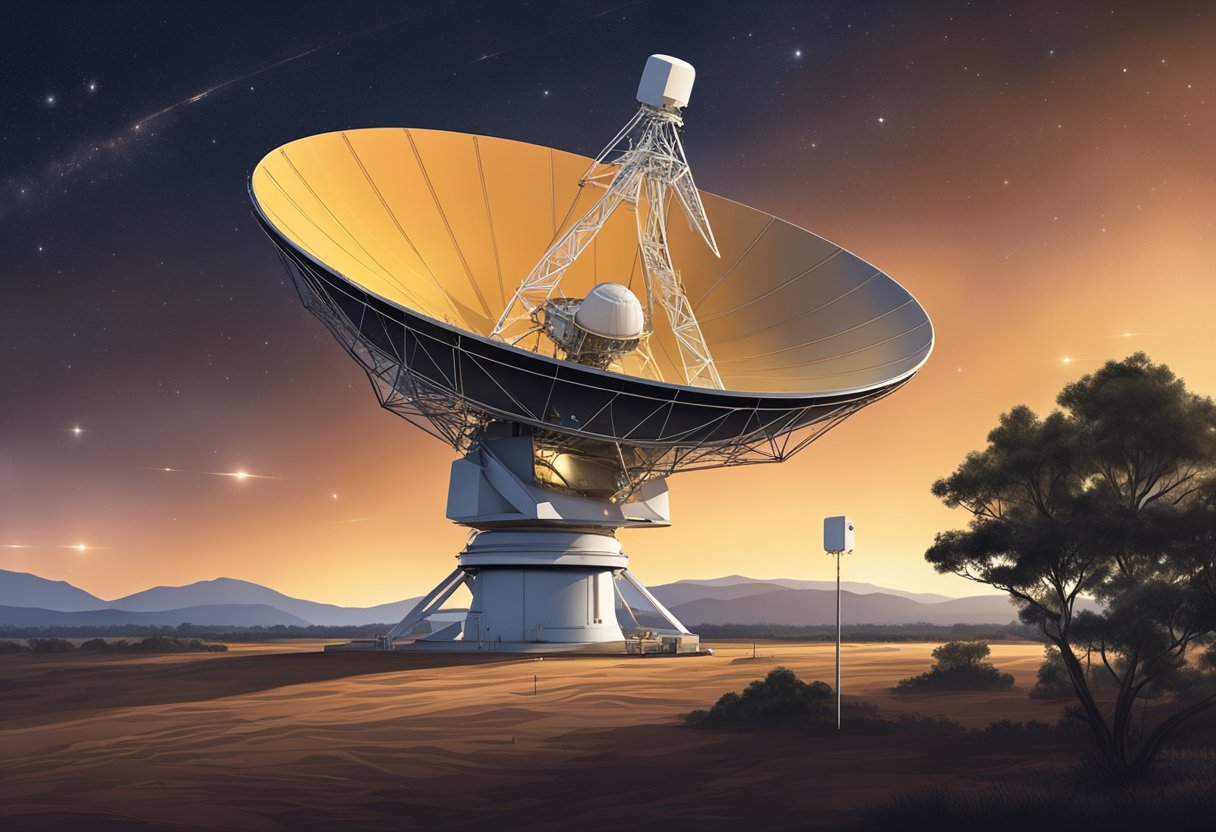
The Deep Space Network (DSN) is essential in space exploration. It plays a critical role in communication, navigation, and advancing technology for deep space missions. This section delves into its sophisticated systems and how they enhance space missions.
Communication and Signal Processing
The DSN uses large radio antennas to communicate with distant spacecraft. These antennas send and receive signals across vast distances. Signal processing involves turning these signals into data that scientists can analyze.
Specialized systems filter and amplify weak signals from space. This ensures that even faint signals from faraway planets are captured. The antennas are located in various parts of the world to maintain constant contact with missions. This global positioning helps in managing multiple missions at once.
Navigation in Deep Space
Navigation in deep space is challenging due to the vast distances and lack of landmarks. The DSN helps spacecraft stay on course by providing precise location data. Radio signals sent from spacecraft are tracked using triangulation methods.
Accurate tracking allows mission control to pinpoint a craft’s position in space. This data is crucial for course corrections and successful mission completion. It also helps in landing spacecraft on other planets, such as Mars.
Advancements in Radio and Optical Communications
The DSN is continually advancing its communication technologies. Traditional radio signals are getting more efficient, allowing for clearer and more reliable communication. The introduction of optical communications is set to revolutionize deep space communication.
Optical communications use lasers to transmit data, which increases bandwidth and speed. This is important for future missions that will collect and send back vast amounts of data. Upgrades like these ensure the DSN remains a vital asset for space exploration.
Operations and Management of DSN
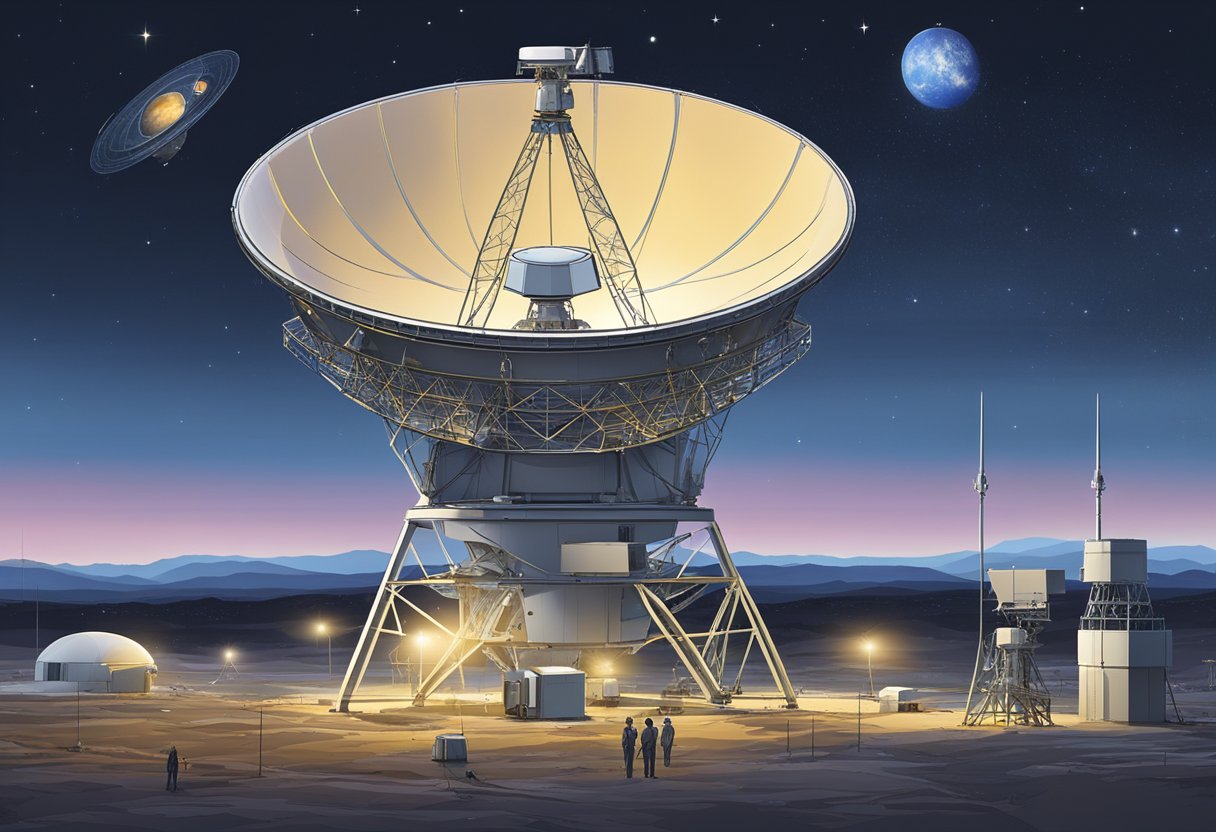
The Deep Space Network (DSN) plays a crucial role in space exploration by providing the critical communication link between Earth and interplanetary spacecraft. It operates facilities managed by the Jet Propulsion Laboratory (JPL) and supports various missions across the solar system.
Daily Operations and Workflow
The DSN operates through a detailed schedule managing tracking passes for different spacecraft.
Each day, the network coordinates with missions to allocate antenna time. Engineers monitor signals, send commands, and receive data. This ensures continuous communication between Earth and various missions.
The space communications and navigation program is involved in daily operations, making sure the network meets the needs of ongoing and new missions.
Network Operations Control Center
The Network Operations Control Center (NOCC), located at JPL, is the heart of the DSN.
The NOCC oversees all communications and ensures smooth functioning of the network. It handles real-time tracking, command transmission, and data reception from distant spacecraft.
In the NOCC, specialists manage signal data processing, adjusting parameters to maintain high connectivity. They ensure the DSN's performance remains reliable for mission-critical operations.
Automation and Future Technologies
Automation is becoming increasingly important for DSN operations.
Automation reduces the need for manual intervention in routine tasks. The network uses digital receivers to enhance signal clarity and reduce noise. Automation helps streamline daily operations, increasing efficiency and accuracy.
Future advancements include the Antenna-Enhancement Program, which aims to develop smarter antennas and advanced technologies. These improvements will support more complex missions and enhance the DSN's capabilities, ensuring it remains at the forefront of space communications.
DSN's Role in Groundbreaking Missions
The Deep Space Network (DSN) is crucial for many NASA missions, offering key support for spacecraft across the solar system. It plays a vital role in interplanetary missions, tracking long-term projects like the Voyager probes, and aiding human exploration efforts.
Supporting Interplanetary Spacecraft Missions
The DSN assists countless NASA missions, such as those exploring Mars. For instance, it supports the Perseverance rover, enabling communication from Mars back to Earth. The network's antennas, located in California, Spain, and Australia, ensure constant communication by covering different parts of the globe.
They provide critical commands and receive scientific data. This network ensures that spacecraft like the Mars Science Laboratory can relay findings about Martian soil, weather, and geology. Radar astronomy and communications with spacecraft around other planets also rely on the DSN, making it indispensable for interplanetary exploration.
Tracking Voyagers and New Horizons
The DSN has been crucial in tracking historic missions such as Voyager 1 and Voyager 2. Launched in 1977, these spacecraft are now beyond our solar system in interstellar space. The DSN’s powerful antennas track both Voyagers and continue to receive data from them, providing insights into the outer reaches of the solar system.
Additionally, the DSN supports the New Horizons mission, which flew by Pluto in 2015. The data from this mission, including images of Pluto’s surface, were sent back to Earth via the DSN. New Horizons continues to explore the Kuiper Belt, sending back valuable information about these distant objects.
Human Exploration and the Artemis Program
The DSN will also support NASA’s Artemis program, which aims to return humans to the Moon. Communication and data relay for crewed missions are essential, and the DSN's capabilities will be used extensively. This program includes the planned Lunar Gateway, a space station orbiting the Moon that will serve as a base for future lunar surface missions.
The DSN’s role extends to other human exploration missions as well, such as those involving the International Space Station (ISS). By enabling continuous communication and tracking, the DSN helps ensure the safety and success of human spaceflight missions, facilitating NASA's long-term goals of lunar and Mars exploration.
Deep Space Network's Impact on Science and Society
The Deep Space Network (DSN) plays a vital role in supporting space missions, advancing scientific knowledge, and engaging the public. It impacts various fields including astronomy, planetary science, and space mission safety. It also enriches education and fosters public interest in space exploration.
Contributions to Astronomy and Planetary Science
The DSN provides crucial communication support for numerous space missions. Interplanetary missions rely on the DSN to send and receive data, which helps scientists study distant planets and moons. For instance, data from the Voyager and Mars rovers come through the DSN, enabling breakthroughs in planetary science.
The DSN also contributes to radio astronomy. It uses its antennas to observe cosmic phenomena, improving our grasp of the universe. By focusing on distant galaxies, black holes, and neutron stars, the DSN assists in expanding our understanding of the cosmos.
Enhancing Safety and Health of Spacecraft
Spacecraft health and safety are significant DSN concerns. The DSN monitors spacecraft systems, ensuring they function correctly and remain on course. It relays commands to alter spacecraft trajectories or perform necessary maneuvers.
Deep space communications are essential for mitigating risks. The DSN provides real-time data, which can indicate issues before they become catastrophic. This continuous monitoring enhances mission safety, allowing engineers to resolve problems swiftly and maintain mission success.
Educational Outreach and Public Engagement
The DSN's role extends beyond science missions to educational outreach and public engagement. By making data and observations accessible, it provides valuable resources for students, educators, and researchers.
Public engagement initiatives, such as the DSN Now tool, allow people to track spacecraft in real-time. This transparency fosters interest in space exploration and inspires the next generation of scientists and engineers. This effort is championed by figures like Ian J. O'Neill, who emphasizes the importance of public involvement in space activities.
The DSN thus not only advances scientific discovery but also plays a key role in engaging and educating society about the wonders of space.
The Future of Deep Space Communication
The future of deep space communication involves cutting-edge technologies, increased global cooperation, and the expansion into innovative communication methods like laser technology. These advancements are crucial for supporting the growing number of space missions.
Technological Innovations on the Horizon
NASA's Deep Space Network (DSN) is undergoing significant upgrades to handle more missions and improve efficiency. Teams at the Jet Propulsion Laboratory are enhancing infrastructure to support upcoming deep space endeavors, including the Artemis program aimed at lunar exploration.
Upgrades include more powerful antennas and advancements in software that increase data transmission rates. Improvements in automation and artificial intelligence are helping to manage the growing complexity of deep space communication. These technologies will ensure robust, reliable communications for future missions to Mars and beyond.
International Cooperation and Collaboration
Global cooperation is key to the future of deep space communication. NASA collaborates closely with the European Space Agency (ESA), ROSCOSMOS, JAXA, and other international partners. This teamwork allows for a more extensive and reliable communication network, crucial for long-duration missions where constant contact is essential.
The joint efforts also help distribute the costs and risks associated with space communication infrastructure. International agreements and shared missions, like the ESA's support for Mars missions, make the network more resilient and capable of supporting a broad range of scientific endeavors.
Expansion into Laser Communications and Beyond
Laser communication, or optical communication, is set to revolutionize deep space communication. Unlike traditional radio waves, lasers can transmit data at much higher rates and with greater precision. NASA's Laser Communications Relay Demonstration (LCRD) aims to test these capabilities for future missions.
Laser communication systems will support higher bandwidth requirements for detailed scientific data, high-definition video, and other large data sets. This technology will also enhance communication with distant space probes and rovers, providing faster and more reliable data transfer. As this technology matures, it will become integral to the DSN and other deep space communication networks.

